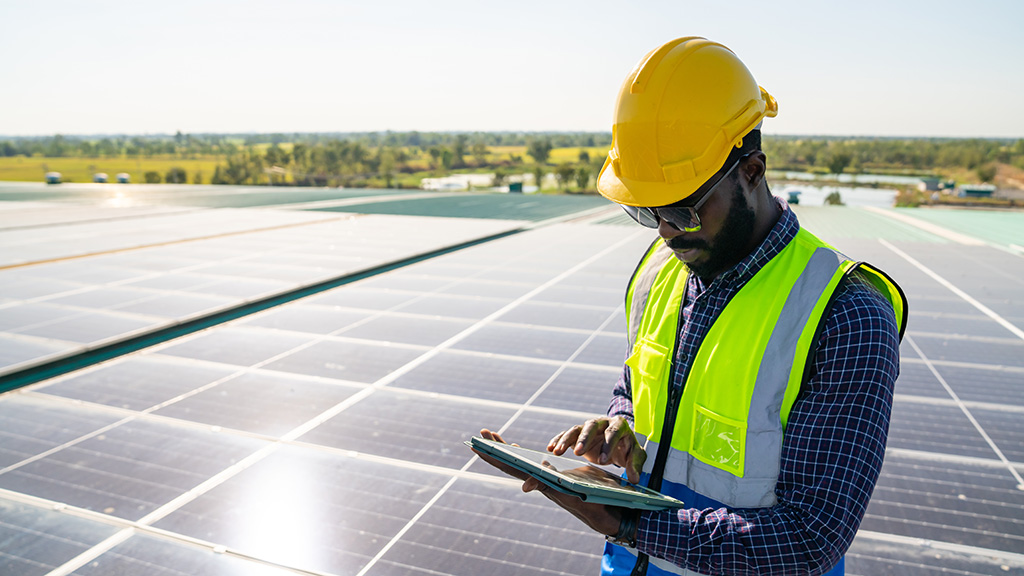Throughout its history, solar power has experienced many phases of growth. Despite these ups and downs, the industry has demonstrated outstanding progress, driven by government subsidies, economies of scale and innovation.
Over the past 10 years, solar panel manufacturing costs have decreased by 90 per cent as technology has matured, manufacturing volumes have increased and financing has become less costly.
China has historically been a global leader in solar power investment and development. JP Morgan Chase & Co. analysts forecast solar installations in China will reach 225 gigawatts in 2024 alone, exceeding last year’s record. This one-year installation figure is more than all solar capacity in the United States, which had 165 GW of solar power in 2023, according to the U.S. Energy Information Administration.
Despite record domestic growth, Chinese production has recently hit a major roadblock. Global demand for solar panels has decreased, competition within the industry has intensified and the U.S. has banned imports of key solar panel components. Industry profitability has dropped and producers have been selling below cost, resulting in mass layoffs.
China’s Longi Green Energy Technology Co. (Longi), the world’s largest solar manufacturer, saw its net income plummet by 44 per cent during the third quarter of last year, an unexpected reversal after a period of rapid expansion.
According to Li Zhenguo, Longi’s president, the company did not raise prices enough to match its competitors and will consequently fall below its yearly shipment revenue target. In response to a weak business outlook, the company is planning to lay off around 80,000 employees, or 30 per cent of its workforce.
Despite the difficulties faced by major industry manufacturers, the situation is about to improve. As Bloomberg Intelligence forecasts, margins are likely to recover, and supply and demand will become more balanced in the coming year.
President Joe Biden’s clean energy campaign in the U.S. has positively impacted the dispersion of solar systems throughout the country. The Solar Energy Industries Association and Wood Mackenzie forecast solar power technology will generate the most energy on the U.S. power grid by the middle of the century.
In March of this year, more than 4.2 million U.S. rooftops, or nearly five per cent of all single-family homes, had solar panel attachments. Solar energy systems in the U.S. currently generate 161,000 megawatts of electricity. This figure is forecast to grow to 377,000 MWs in the next four years.
This progress has been due, in part, to the numerous subsidies made available to U.S. solar power energy factories. Additionally, U.S. business owners and homeowners can receive a federal tax credit if they install solar panels and other solar energy systems on their properties.
The long-term outlook for solar power remains promising as it is one of the major contributors to the carbon free energy transition that is taking place worldwide. In 2022, for the first time in history, investment in renewable energy matched investment in fossil fuels.
From 2021 to 2022, investment in carbon free energy supply increased by approximately 18 per cent, with this bullish trend expected to continue in the long-term. According to the Bloomberg New Energy Finance (BNEF) report, Energy Transition Investment Trends 2023, global investment in renewable power generation will increase threefold between 2023 and 2030.
Over the last five years, global photovoltaic production capacity has gone up between two and three times, reaching the range of 650 GWs to 750 GWs. China has been a clear leader in solar manufacturing, building 90 per cent of all incremental capacity.
Even though many Chinese manufacturers are currently experiencing lower margins, PV manufacturers globally have stayed profitable. The problems of Chinese PV production companies seem to be caused by the overbuilding of manufacturing facilities and fierce domestic competition.
Over the last two years, average prices in U.S. power purchase agreements for solar power have resumed their growth. At the same time, the cost of materials, especially polysilicon, have decreased dramatically. According to BNEF, global polysilicon spot prices fell -18 per cent from mid-October ($10.53/kg) to mid-January ($8.70/kg), approaching a several-years low.
Competition within the solar industry is escalating due to growing excess capacity and lagging global solar panel demand. Despite the challenges faced by key industry manufacturers, the forecast for the solar industry is positive as margins are expected to improve in the long-term. The U.S. and Chinese governments are aiming for a better supply-demand balance, with China limiting capacity growth and the U.S. boosting demand and domestic production.
Dmytro Konovalov has over 10 years of experience in equity research and analysis for global markets at leading international financial institutions.







Recent Comments